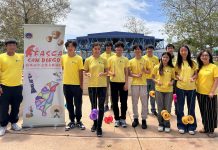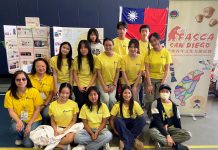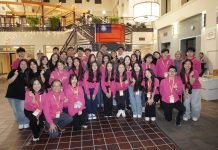When I first set out to interview Jane and Dave Jensen of Decorah, Iowa, I envisioned walking away from our interview with a story about how the international adoption process has changed over the years for adoptive parents like the Jensens. I thought I would hear how adoptive parents now travel to the birth country of their child to meet him or her prior to bringing them home to the United States. (This is in comparison to earlier days when adoptive parents would hold their child for the first time at a U.S. airport after waiting hours for their new son or daughter’s international flight to hit U.S. soil.) Or a how the actual adoption process is now carried out in U.S. and local government offices in the child’s birth country, an approach much different from earlier times when such formalities were conducted in a U.S. courtroom.
I expected to hear how the international adoption process has evolved since the 1970s when I was adopted, and whether things have changed for better or for worse. And while I did get answers to all these questions through my interview with them, the story I originally set out to write had completely changed after hearing the Jensens’ experience of raising a family of 12 children, including four biological daughters, two daughters from China, four sons also from China as well as twin girls from Ethiopia. By the end of the interview, the story I originally had in my mind had transformed from one intending to focus on the changes the international adoption process has undergone throughout the years to instead, a story centered on the emotional experience and perspective of adoptive parents who, like their children, are deeply touched by the adoption experience.

The Jensens started their family with four daughters: Erica, 25; Dana, 24; Kari, 23 and Kiersten, 20, all who are biological children. But as the couple realized they wanted to grow their family and learned of the many kids in the world who didn’t have someone to fill the role of a parent, they decided to adopt rather than give birth to another child. This decision led to the adoptions of Claire,14, from Fujian, China; David, 13, from Guangxi, China; Matthew, 12, from Xinjiang, China; Amy, 10, from Guangdong, China; Luke, 9, from Jiangsu, China; Abbeke and Asmere, 8, from Woylata, Ethiopia and Jay, 5, from Hunan, China.
With six of their children coming from China, the country has no doubt become a meaningful place to the Jensens. “China was a country we were drawn to,” Jane explained to me over email. “We love the Chinese people and culture, and the country has a very strong and organized adoption program. Our first adoption was Claire, born in China, and it was such an incredible experience that we soon adopted David, then Matthew, Amy, Luke and Jay.”

According to Jane, children available for adoption from China have mostly been abandoned. Abandonment occurs for many reasons although the vast majority of Chinese children available for adoption have some degree of special need versus the “healthy” infant girl that was common when adoptions first began in China in the 1990‘s due to the country’s one-child policy and a cultural preference for sons.
“We were drawn to children who had a medical need as we have access to great health care and knew this was something we could do,” Jane said. (Dave is also a physician.)
For each of their children’s adoptions, the Jensens traveled to China (and Ethiopia in the case of their twin girls) to carry out the adoption process. “I wouldn’t want it any other way,” Jane told me. “It was so beneficial for so many reasons to travel to their countries to adopt them.

“Primarily, when adopting our children, or any child, everything in their lives is completely turned upside down and can be very stressful for them at first. Everything they had known was changing: their home, the people caring for them, the language, the sounds, smells, food, etc.”
The requirement of having adoptive parents travel to their children’s birth country not only allows the new family to focus on bonding with each other, but also lets adoptive parents become immersed in the culture their chid was born into. While in China, the Jensens toured their children’s home provinces and collected special items to save for them when their kids grew up. When possible, they also visited their children’s orphanages or foster families, giving themselves a real glimpse into the early lives of their kids.
Adoption is amazing, the Jensens acknowledged, but isn’t always easy. “There can be challenging moments along the way, as with any parenting experience but, in our situation, any challenges are far outweighed by the overwhelming positives, and we’d do it all over again in a heartbeat,” they told me.
“Each child reacted differently and in their own way to the adoption process and the tremendous changes taking place in their lives,” they said. “Often, [they were] grieving for their special caretaker along with the all changes taking place. For example, [sometimes they would be] crying, quiet and reserved, angry, scared, etc. This was always seen as a positive sign by us, as it meant they had formed bonds and would be able to do so again.”

Currently living in a small Iowa community, the Jensens truly are an example of the changing definition of the American family: multi-racial, bound by biology and adoption, and truly, in every sense of the word, a blended family.
While a typical Jensen family photo, to Jane’s chagrin, is often missing a family member or two (“I need to schedule a photographer!” she wrote to me) it is still an incredible image of diversity and love. And while their family can be considered a shining example of the beauty of international adoption, both Dave and Jane are very open and realistic about how being adopted can affect a person’s life and identity, both as a child and an adult adoptee.
“Our family has always been extremely open about adoption,” Jane and Dave told me. “It’s become part of natural discussions. We talk about each child’s adoption frequently, encourage questions, keep communication open and always give honest answers to their questions, even admitting we don’t know the answer when we don’t. Our children know we are available to talk about their adoptions and their stories anytime they would like, and this open communication has been so important.”
The couple said questions come up at the most expected and most unexpected times, and as the children grow older, the things they as parents worry about the most are issues such as racism, stereotypes and how their kids will deal with these issues.
“We live in a small community in Iowa where there is not much diversity and so far we are unaware of any issues in this regard,” Jane said. “However, we know it is inevitable that they will encounter this at some point in their futures, and they need to be prepared.”
The Jensens have taken solace in the fact that they are not alone in this journey as adoptive parents. Today, the internet and social media are incredible resources for adoptive parents and blended families, and the Jensens have benefited from “an amazing adoption community online.”
“Groups exist relating to most any issue, whether it be regarding the adoption process, issues arising before, during and after the adoption, as well as medical, emotional and psychological issues,” Jane said. “These groups also have great references for professionals in all areas. Most adoption agencies are equipped with information and resources to direct parents to when/if needed.”

Like many families formed by adoption, the Jensen family is a reminder that being a parent is not something only defined by blood. At the end of the day, being a parent is a relationship truly created by love. After that special ingredient is solidified, the rest falls into place.










